
About Andrew Cusack
 Writer, web designer, etc.; born in New York; educated in Argentina, Scotland, and South Africa; now based in London.
Writer, web designer, etc.; born in New York; educated in Argentina, Scotland, and South Africa; now based in London. read more
News
Blogs
Reviews & Periodicals
Arts & Design
World
France
Mitteleuropa
Knickerbockers
Argentina
The Levant
Africa
Cape of Good Hope
Netherlands
Scandinavia
Québec
India
Muscovy
Germany
Academica
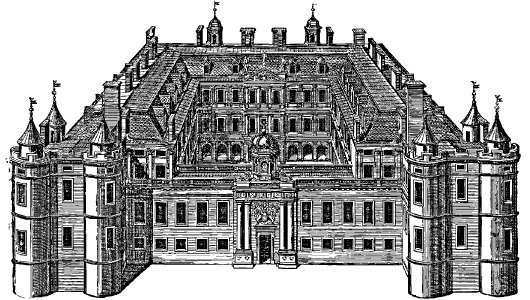
The Palace of Holyroodhouse
HOLYROOD IS SUCH a pleasant spot, despite the recent intrusion of an ostentatiously ugly government building designed by a Spanish architect. The other day, while visiting Edinburgh, I heeded the recommendation of the Prettiest Schoolteacher in Clackmannanshire to sample the burger at the Holyrood 9a. It was quite delicious, though not perfect, and was splendidly washed with a pint of Kozel (most un-Caledonian, I concede, but you can get Deuchars in London, you know).
Afterwards, our little party decided to have a little wander down Holyrood Road towards the Palace of Holyroodhouse, the epicentre of the Scottish monarchy.
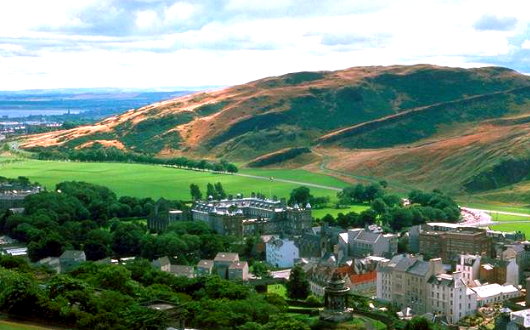
Nestled between Calton Hill and Salisbury Crags, the Palace sits at the end of the Royal Mile that runs between it and Edinburgh Castle. With the Old Town to its west, the expanse of Holyrood Park flows off to the south and east of it.
An Augustinian abbey dedicated to the Holy Cross was founded on the site in 1128 on the command of King David I. A relic of the True Cross is believed to have been in the possession of David’s mother Saint Margaret, and was probably kept in the abbey church. As the monastery was a royal foundation, it was highly favoured by Scotland’s monarchs and Robert the Bruce held a parliament at Holyrood in 1326. It was probably around this time that its function as a royal residence began. With the interment of the remains of David II in 1370, Holyrood became a royal burying ground, and several later kings of Scotland were born, married, and buried at the place.
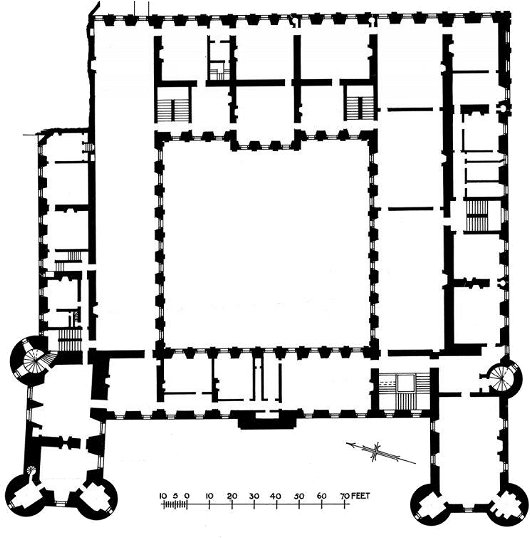
When the Reformation reared its ugly head in Scotland, the Abbey was abolished and its church fell into neglect and ruin, with only the nave being kept in good condition as the local (Presbyterian) parish kirk. When James VI of Scotland inherited the throne of England and moved to London, Holyrood Palace lost its role as an active royal residence and the secularised buildings began to be neglected as well.
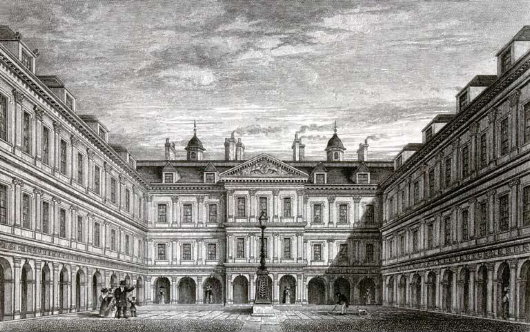
The Palace fared better under the Charleses. Charlie the First held a Scottish coronation at Holyrood, which necessitated certain repairs and restorations, and appointed the (1st) Duke of Hamilton as Keeper of Holyroodhouse, an office which his descendants have maintained to this day. It was Charles II who really made Holyroodhouse the royal palace it is today. He employed Sir William Bruce, the Surveyor of the King’s Works, to build a classical quadrangle in the middle of the palace and complete ranges of apartments around it, balancing the west façade with a replica tower house to match the ancient one.
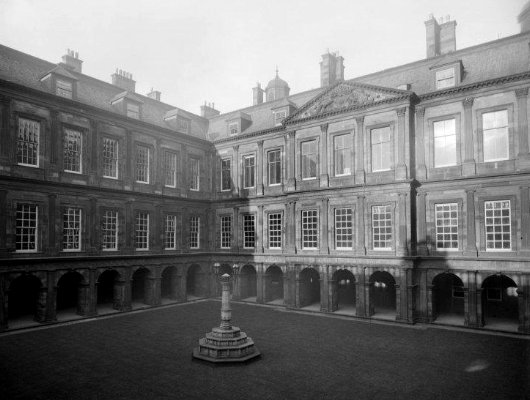
But Holyrood’s history — like Scotland’s — is a continual series of ups and downs. With the Act of Union in 1707, Scotland lost even its status as a kingdom with an absentee king: it was now part of a single United Kingdom with the capital at London. From the on the Palace’s fortunes waxed and waned until George V insisted it be properly renovated and maintained so that it could function once more as the official Edinburgh royal residence of the King of Great Britain.
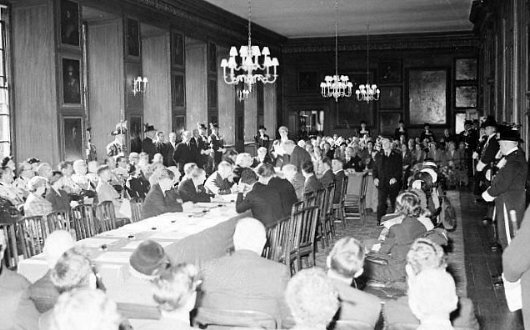
One of the few governmental functions that continued to take place at Holyroodhouse was the election of Scotland’s representative peers (above). When Scotland and England joined together in 1707, the English aristocracy feared their House of Lords would be swamped by the addition of Scotland’s titled nobility. Hence, they negotiated that Scotland’s peers would elect a proportionate number of themselves to sit in the House of Lords at Westminster. This system continued until 1963, when it was decided to allow all Scottish peers to take their seats at Westminster.
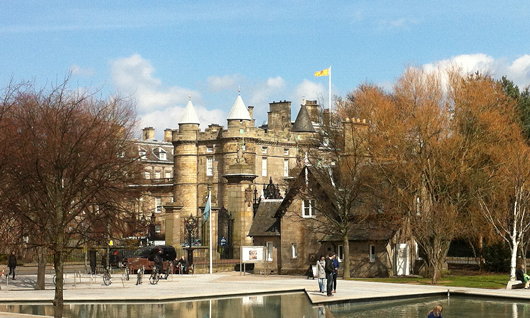
I was disturbed to see that the Scottish standard now flies from Holyrood every day, in defiance of tradition. The previous custom had been that it would only fly when the monarch was in residence, or when the Lord High Commissioner to the General Assembly of the Church of Scotland — a sort of royal envoy to the annual Presbyterian pow-wow — was exercising his functions at Assemblytide. It is always a shame when the special becomes quotidian.
Search
Instagram: @andcusack
Click here for my Instagram photos.Most Recent Posts
- Burns Tower April 19, 2024
- Patrick in Parliament March 18, 2024
- Articles of Note: 13 March 2024 March 13, 2024
- Cambridge March 9, 2024
- Taken on Trust March 4, 2024
Most Recent Comments
Book Wishlist
Monthly Archives
Categories



According to Wikipedia “The Royal Standard of Scotland is used officially at the Scottish royal residences of the Palace of Holyroodhouse, Edinburgh, and Balmoral Castle, Aberdeenshire, when Her Majesty The Queen is not in residence. The Royal Standard of the United Kingdom used in Scotland is flown when the Sovereign is present.” http://en.wikipedia.org/wiki/Royal_Standard_of_Scotland
Yes, the Royal Banner was even half-masted recently (gasp!) to mark the death of Baroness Thatcher.